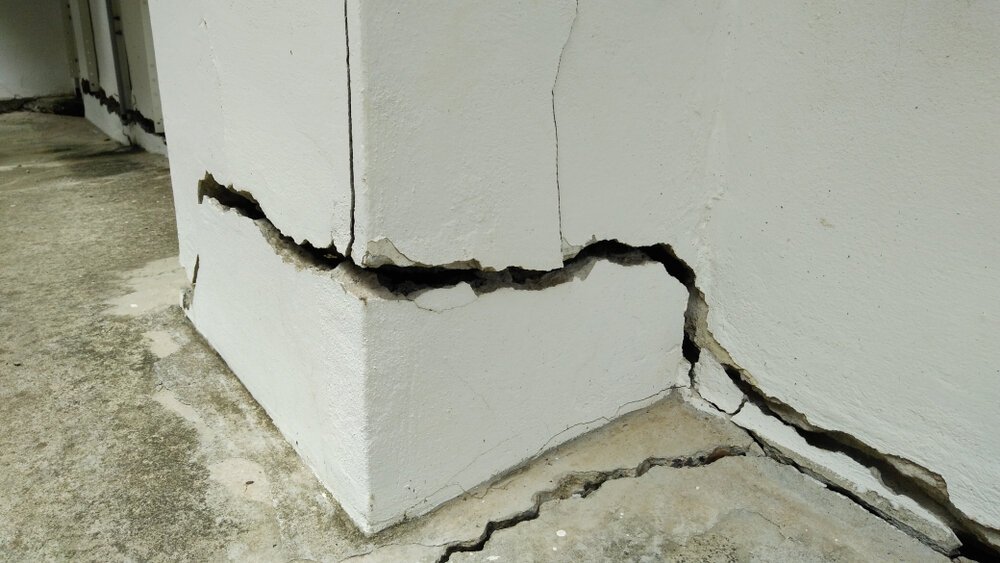Cracks in the foundation are very common in many residences and commercial buildings. These cracks typically occur along the foundation walls, near the doors and windows, and in places where two walls meet. Foundation cracks must not be ignored as they can damage your building’s structure. One way to prevent these cracks is by waterproofing your basement. If you are looking for professional basement waterproofing in Woodridge, you can contact Seepageseal. They offer basement waterproofing and foundation crack repairs. But before contacting professionals to repair your foundation cracks, you must know what has caused the crack. Below are some common reasons that could cause cracks in your foundation:
Foundation Settlement
The foundation of any new home settles after some time. Most of the time, the foundation will settle uniformly. However, there may be times when the foundation doesn’t sink uniformly. This leads to uneven flooring. This issue is common in homes built on compacted soil as how they tolerate this shift in the foundation will depend on the soil type and foundation design.
Natural Curing
Usually, cosmetic cracks appear on the foundation walls of a new building within two years. These cracks are generally not dangerous and occur when the concrete dries up. These cracks can easily be fixed using cement or epoxy.
Earthquakes
Earthquakes are another cause of cracks in any foundation. Earthquakes occur when the earth’s tectonic plates move and collide. This collision causes the ground to shake. These earthquakes can move the stratum of soil on which any building is built. This movement can damage the foundation.
Heat
Excessive heat can also damage your building’s foundation. The ground heats up during the day, expanding the concrete. At night, the concrete cools off and shrinks back to its original position. This cycle of heating and cooling triggers cracks in the foundation.
Frost Heave
Heaving is common in the winters and can damage your foundation considerably. The soil expands upwards as it freezes when the temperature dips. This moves the ground on which your foundation is built, causing cracks. This shifting soil can destabilize floors by tilting them. The level of damage to the foundation will increase as the temperature falls below 40 degrees consistently.
Expansive Soil
Minerals in some soils absorb moisture from the ground. These types of soil expand when they come in contact with water and shrink in warm weather. This can cause structural cracks and deformities. The load on the ground, the amount of moisture in the soil, and the thickness of the soil stratum will determine the swelling potential of these soil types.
Poor Grading
Improper grading affects the foundation. Anytime it rains, the water flows back and not out as it is supposed to. Most of this water ends up in the foundation, weakening it and causing cracks.
Tree Roots
Roots go far under a building’s foundation. When the roots move around below your foundation, they shrink and settle the soil. This settlement causes cracks in the foundation. You can avoid this problem by cutting down shrubs and trees that are too close to your foundation.
Why are Foundation Cracks a Problem?
Not only are foundation cracks an eyesore, but they can also lead to various problems and damage your home. Even the smallest of cracks can become big issues over time. Common problems that foundation cracks cause are given below:
- Weak foundation causing structural issues
- Leaks causing water damage
- Uneven flooring
- Damage to plumbing and pipes
- Windows and doors that are stuck
- Insect infestation
Preventing Foundation Cracks
While foundation cracks in buildings are common, you can prevent them from growing and causing serious damage to your buildings. One effective measure to prevent these cracks from growing is waterproofing your basement and yard. Proper drainage near the foundation also prevents water buildup that can create pressure and crack. Identifying areas prone to cracks and monitoring them will help you prevent problems. Hiring a professional is recommended to repair foundation cracks. Below are two ways to repair and prevent foundation cracks:
Interior Solutions
You can use a Polyurethane injection or hydraulic cement to fill interior cracks. This injection will fill the cracks from the inside and flow to the outside.
Exterior Solutions
Exterior solutions are very effective in sealing cracks of the foundation walls. The professional will evacuate a trench and expose the foundation. Then they will replace or repair the damaged portion of the foundation and close any cracks with hydraulic cement.
You should not ignore foundation cracks. Identifying them at the right time and taking preventive measures can prevent permanent damage to the structure.

